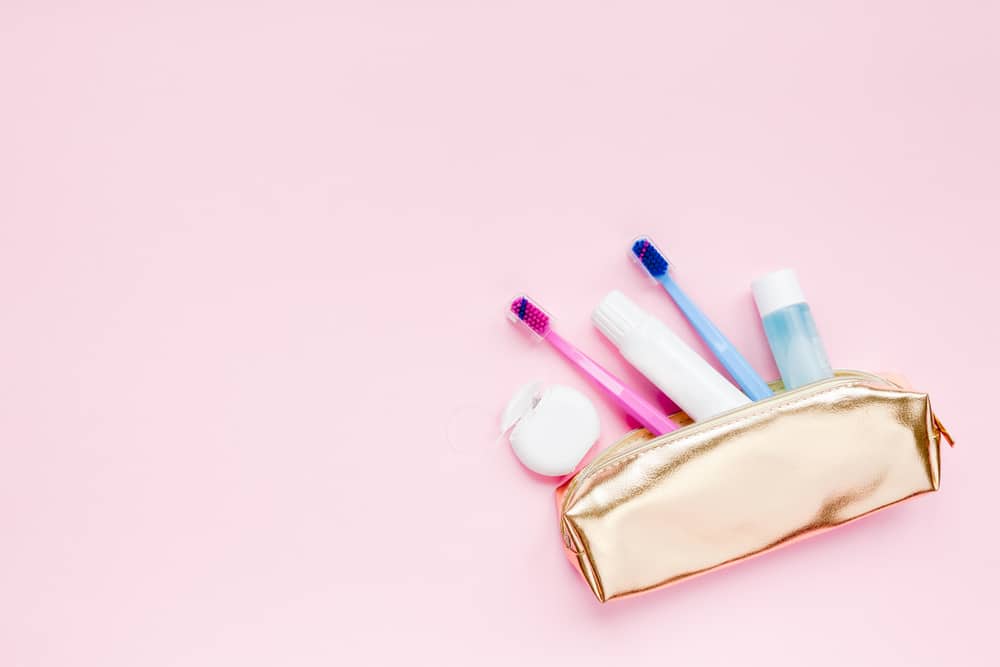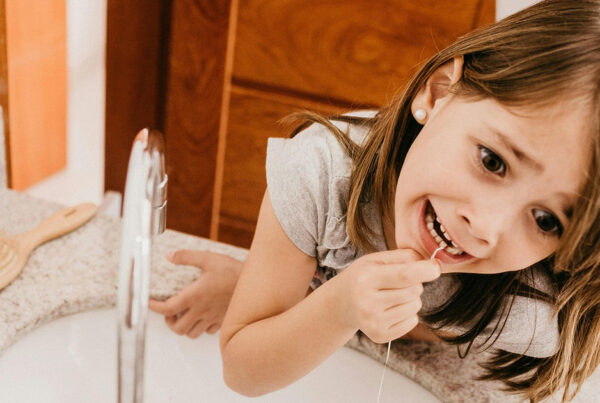Take a look at the oral care section at most stores and you’ll be greeted with shelves packed with products and gadgets. Add social media ads to the mix, and it can get kind of overwhelming. What exactly does a good oral hygiene routine look like? Should you floss or brush first? Do you need to use mouthwash? What’s the best toothbrush?
As a Mount Pleasant dentist and owner of Nest Dental, I get these types of questions a lot. The truth is, the best dental hygiene regimen will depend on your unique needs and situation. When you visit Nest Dental on Fraser Street for an exam and cleaning, I’ll give you personalized recommendations and help you create an oral care routine tailored to your smile.
But, in the meantime, following these general guidelines will help banish more plaque and keep your teeth and gums healthy.
Why is Oral Hygiene Important?
Before we get into the oral hygiene instructions, let’s have a quick refresher on why oral hygiene is important. Of course your diet, oral habits like bruxism, genetics and how often you see your dentist for routine care all play a big role in your overall oral health. But, so does your oral hygiene routine.
The bacteria in your mouth mix with saliva and food debris to form a sticky bacterial film called plaque. Plaque clings to the teeth and, when not brushed away, releases cavity-causing acids. Over time, the bacteria and acid attacks contribute to tooth decay, cavities and gum disease.
Brushing and flossing is how you get rid of food bits, bacteria and plaque, reducing the acid attacks on your enamel and preventing plaque from hardening into tartar. When your oral hygiene routine includes fluoride, whether in toothpaste or a mouth rinse, it also helps to remineralize the teeth, which means replacing the minerals that were lost to acids.

The Tools
The following tools will maximize your oral care:
- Toothbrush – The best toothbrush is one with soft, rounded bristles, because it’s gentle on your gums. While a manual toothbrush is fine, an electric toothbrush does tend to give you a better clean if it’s in your budget. How often should you change your toothbrush? According to Canadian Dental Association (CDA) guidelines, you should change your toothbrush or toothbrush head every three months. I’d also recommend changing it after an illness.
- Toothpaste – Of course, you’ll need toothpaste too. For most people, the best toothpaste is one containing fluoride. Look for the CDA Seal on the package, which means the manufacturer’s oral health benefit claims have been independently reviewed and have scientific evidence to back them up.
- Mouthwash – A fluoride mouthwash will aid in remineralization and strengthening your enamel. Using a mouthwash helps to get rid of any food or plaque you might have missed while brushing and flossing. There are a zillion types of mouthwashes with so many different claims. To narrow it down, again, look for the CDA Seal to ensure the claims are supported by scientific evidence.
- Dental Floss – As long as your dental floss slides smoothly and comfortably between your teeth, it will do the trick. If you have a dental bridge or braces, you’ll also need floss threaders. While there isn’t a single best dental floss, some good ones include:
- Cocofloss – a bit of splurge but loved by dentists and hygienists everywhere
- Oral-B Complete Satin Floss – has the CDA Seal
- Risewell – a clean option that’s vegan, PTFE- and petroleum-free
- Water Flosser (optional) – Using a Waterpik, or water flosser, is optional but worth it for a lot of my patients. You’ll want to use a water flosser in addition to flossing with regular dental floss. Most of the Waterpik brand water flossers have the CDA Seal.
- Xylitol Gum (optional) – For an extra bonus, you can chew sugarless gum with xylitol. Xylitol is thought to help prevent cavities, and the act of chewing gum stimulates saliva production. Saliva washes away the bad stuff and contains minerals to neutralize those plaque acids and strengthen your teeth
The Best Dental Hygiene Routine
The Morning
There have been a number of articles published about whether you should brush your teeth before or after breakfast. The answer might surprise you, but you should brush your teeth before breakfast.
Why? If you eat or drink anything acidic, like coffee, orange juice or fruit, it temporarily weakens the enamel. Brushing your teeth within 30 minutes to an hour after having a cup of coffee or citrus fruit can damage your enamel in its weakened state. Plus, your toothpaste provides a nice protective layer, which may even reduce staining and the effects of food and beverages.
So, when you first wake up:
- Brush your teeth – Squeeze some toothpaste onto your toothbrush and brush your teeth for two full minutes, giving each tooth a little TLC. Finish up by brushing your tongue to say goodbye to the bad breath-causing bacteria that can get trapped on its surface.
- Have breakfast
- Swish with mouthwash – If you’re wondering when to use mouthwash, after breakfast is a great time! Since you brushed your teeth before eating, mouthwash will help get rid of any food particles and beverage residue, while also freshening your breath for the day.
After Meals
- Brush or rinse with water – If you can swing it, brushing your teeth after every meal will go a long way in keeping your teeth clean. Otherwise, consider swishing thoroughly with water to rinse your mouth after eating.
The Evening
- Floss your teeth – Should you floss or brush first? Floss before brushing. This way, you’ll be able to brush away anything you dislodged with your dental floss. Break off a piece of dental floss about 12 to 18 inches long. Wrap it around your fingers and position it between any two teeth.
Floss up and down the side of one tooth, reaching under the gum line, and up and down the side of the other tooth. Floss between all of your teeth, as well as around the back molars. When you’re done, rinse with some water and spit it out.
- Optional: Use a water flosser – After flossing with dental floss, you can also use a Waterpik, or water flosser, to wash away any remaining food and plaque from hard-to-reach places. You don’t have to use a water flosser and it is an extra step since it doesn’t replace flossing with dental floss. That said, it does make your mouth feel exceptionally clean and it’s especially helpful for people with gingivitis, who are prone to cavities and those with braces.
- Brush your teeth – Brush your teeth for two whole minutes.
- Swish with mouthwash – If you use a prescription fluoride toothpaste, you’ll skip this step since you don’t want to rinse the fluoride off your teeth before bed. Otherwise, if you want a little added assurance that you’ve zapped all of the plaque in your mouth, wrap up your oral hygiene routine for the day with one final rinse. Swish the mouthwash around for 30 to 60 seconds, depending on the brand and instructions, and then spit it out.
Schedule Your Vancouver Dental Exam at Nest Today!
A dedicated oral hygiene routine is a key to amazing oral health, especially when combined with routine dental exams and cleanings. If you’re looking for a new kind of dental experience, book your next check-up at Nest Dental online or by calling us at 604-200-0769. Not only will I be able to give you personalized oral hygiene instructions, but with private treatment suites and custom entertainment options, your visit will feel like a spa day for your smile.




